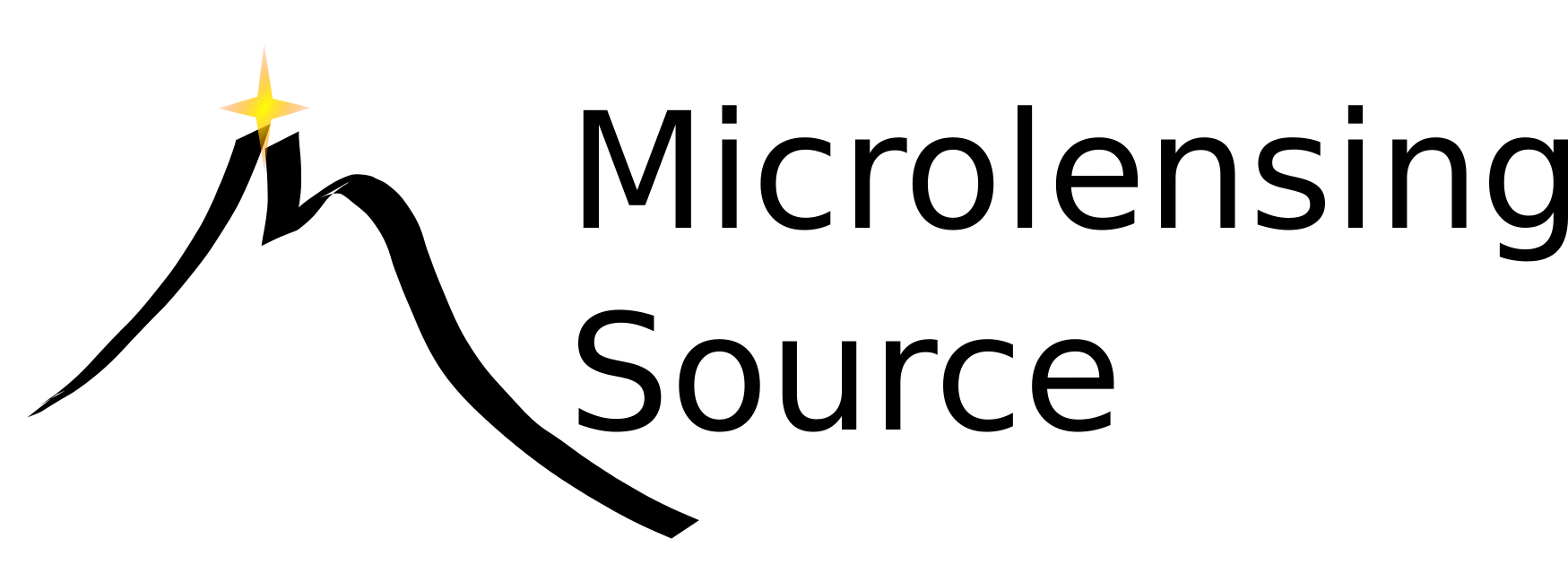
This is a really exciting time for microlensing as a number of space-based telescopes are currently running microlensing programs, and major new survey facilities are on the horizon.
| Program lead by | Andy Gould, Max Planck Institute, Heidelberg and Jennifer Yee, Harvard CfA |
| Website | Spitzer Website |
| Telescope aperture | 0.85m |
| Orbit | Earth-trailing, heliocentric |
| Campaign dates | 2014 to date |
| Instrument | Infrared Array Camera (IRAC) |
| Passbands | 3.6 and 4.5 microns |
Spitzer's separation from Earth also places it in an excellent position to measure the parallax for microlensing events, but its field of view is smaller than Kepler's, making this a targeted instrument rather than a survey. The Spitzer program team worked extremely hard to make it possible to observe microlensing events selected in real-time from discoveries made by the ground-based surveys, and their efforts have yielded a range of exciting discoveries.
| MicroSIT PI | Scott Gaudi, Ohio State University |
| MicroSIT Deputy PI | David Bennett, Goddard Space Flight Center |
| Website | WFIRST Website |
| Telescope aperture | 2.4m |
| Orbit | Sun-Earth L2 |
| Planned launch | Mid-2020's |
| Instrument | Wide-field survey instrument, 0.28 square degree field of view |
| Passbands | 0.7 - 2.0 microns |
The WFIRST mission is currently ramping its development with the formation of Science Investigation Teams whose role is to plan all aspects of the science programs and examine the impacts of proposed technical modifications. As microlensing is one of the main science goals of the mission, it has its own "MicroSIT" team, created in 2016. WFIRST will represent a watershed in microlensing owing to the expected number of discoveries. Simulations by Matthew Penny predict ~3000 lensing planets will be discovered, allowing microlensing to complete the census of cool planets at separations of ~1-10 AU from their host stars, complementing the discoveries of Kepler and other programs for planets at smaller separations from their hosts. WFIRST will also be sensitive to free-floating planets, as it will observe continuously for extended periods each year.
| Website | Kepler Website |
| Telescope aperture | 0.95m |
| Orbit | Earth-trailing, heliocentric, approximately 0.5AU from Earth during Campaign 9 |
| Campaign dates | 2016 April 22 to July 1 (with a mid-campaign break from 2016 May 19-22) |
| Field of view | A 3.74 square degree-superstamp region was defined out of the 119 square degree full field of view. Additional thumbnail stamps were also added for selected late-submission targets |
| Pixel scale | 3.98 arcsec/pixel |
| Passbands | Single custom filter spanning ~420-900nm |
Campaign 9 of the Kepler spacecraft's extended mission (K2) was dedicated to a survey of a region of the Bulge where microlensing events are most frequently detected. Despite a late start to the Campaign owing to an Emergence Mode event on the spacecraft, K2 continuously observed the Bulge at a 30min cadence from late April to July, with a mid-Campaign break. This allowed the data from the first phase to be downlinked as well as additional late targets to be uplinked, roughly mid-way through the Campaign, extending the survey coverage as long as possible, while increasing the number of known microlensing events covered. The Campaign was organized a little differently from other K2 Campaigns: rather than ask for selected targets as is usual during a K2 Guest Observer program, for Campaign 9 NASA recruited a K2 Microlensing Science Team to guide the campaign on behalf of the community. The primary science of Campaign 9 stems from the opportunity to observe events simultaneously from two platforms - Earth and K2 - as this enables us to measure the parallax to most microlensing events. This allows us to measure the masses of the lensing objects, something that is only possible for a fraction of events when observed from Earth alone. For more details on how this is done, click on the Learning tab. K2's ability to stare continuously at a field made this mission particularly exciting, as it means K2 is sensitive to extremely short timescale events. Microlensing events which last <3 days may be due to the free-floating planets first identified by Takahiro Sumi et al. 2011. The problem is that the true masses of the lenses can't be measured from ground-based data alone. Thus, K2/Campaign 9 offers us the chance to properly characterize these lenses for the first time. The science of K2/Campaign 9 therefore required simultaneous ground-based observations in addition to Kepler. You can read about the extensive ground-based program that took place in 2016 in Henderson et al.2016. The microlensing community was very active in monitoring all the events discovered in this field from the ground-based surveys, and you can explore the data on these events using the NASA ExoFOP system's custom-built page for Campaign 9: ExoFOP-K2C9
| Microlensing program lead by | Łukasz Wyrzykowski, Warsaw University Astronomical Observatory, Poland |
| Website | Gaia Website |
| Orbit | L2 |
| Mission dates | Launched in 2013, main mission continues until 2019 |
| Telescope | Two telescopes, both with a collecting area of 0.7m2 |
| Instruments | ASTRO (astrometry), RVS (radial velocities), BP/RP (photometry) |
| Passbands | (BP) 330–680 nm, (RP) 640–1050 nm |
Gaia's mission is to deliver precision astrometry, photometry and spectroscopy of approximately 1 billion objects across the whole sky down to magnitude∼20. It is capable of discovering microlensing by both the photometric and astrometric signatures, and provides real time alerts of variable objects. Notably, it has discovered microlensing events outside the Galactic Bulge fields surveyed by other microlensing programs.